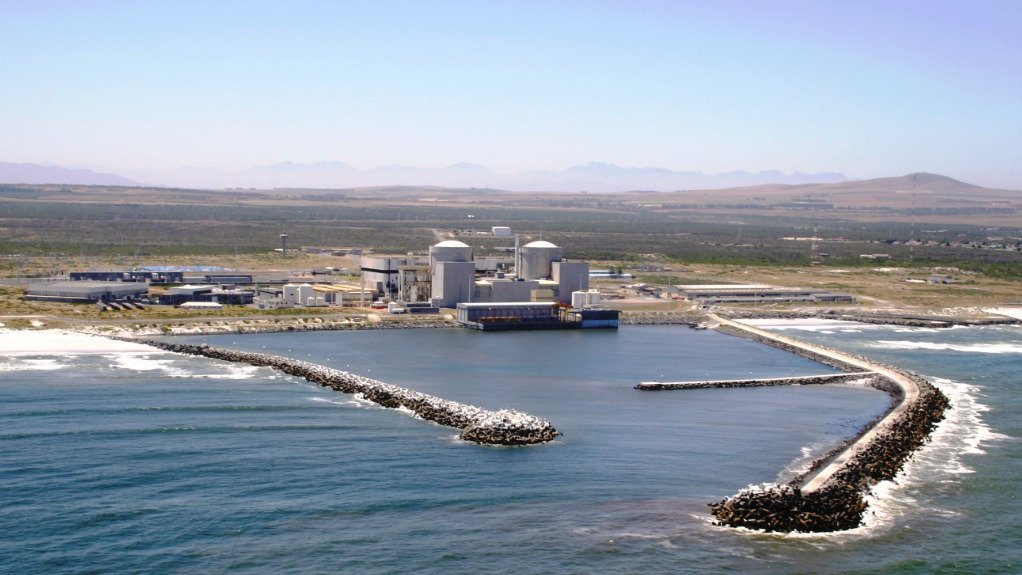State-owned electricity utility Eskom announced in July that the National Nuclear Regulator (NNR) had extended the licence for Koeberg nuclear power station Unit 1, in the Western Cape, until 2044.
This extension highlights Koeberg's vital role in providing reliable baseload power while meeting stringent international safety standards. Eskom has operated Koeberg safely for 40 years, investing significantly in safety improvements and extensive maintenance.
“Together with our business partners, we are proud of the achievement that ensures that Africa's first and only nuclear power plant can now continue to operate safely into the future,” says Eskom generation group executive Bheki Nxumalo.
Eskom will operate the unit until January 2025, when it will undergo refuelling and maintenance. The licence for Unit 2 expires on November 9, 2025, with long-term operation decisions pending completion of various prerequisites during the current outage.
The extension of Koeberg's life from 40 to 60 years, aligns with the 2023 Integrated Resource Plan (IRP). The NNR has granted Unit 1's extension, and Unit 2 is on track for a similar extension before its licence expires. Globally, about 120 reactors have safely extended their operation beyond 40 years, with some receiving further 20-year extensions, says Koeberg power station manager Velaphi Ntuli.
The licence extension reflects the utility’s dedication and ongoing efforts towards achieving nuclear safety and meeting the utility’s generation recovery plan, states Eskom chief nuclear officer Keith Featherstone. Koeberg's safety improvements, based on international nuclear experiences, achieve minimum risk levels expected for new, modern nuclear plants.
Upgrades and Safety
A fundamental objective of the nuclear industry is to enhance safety using international operating experience, resulting in enhanced plant design, operating procedures, human skills and safety culture, adds Ntuli.
The utility regularly benchmarks Koeberg's safety measures against international standards through its association with the World Association of Nuclear Operators, the Institute of Nuclear Power Operations (INPO), Électricité de France and the Electric Power Research Institute. These assessments ensure that Koeberg aligns with global best practices.
Eskom has implemented significant safety upgrades that include key procedural improvements such as operating technical specification expansions, INPO-accredited operating training and the extended use of probabilistic safety assessments to focus on potential vulnerabilities.
Hardware changes include reactor vessel head replacements, control panel layout improvements, primary pressure-operated relief valve upgrades, external supplementary cooling systems, additional diesel generators, hydrogen recombiners and modernised electronic systems.
Other improvements and upgrades include the addition of a totally independent backup automatic reactor trip function during anticipated transients, upgrade of the radiation monitoring system and various control systems, as well as the replacement of various valves and instruments that ensures functionality during severe accident environments.
Contributions to Energy Security
Located at the end of the long transmission lines from the coalfields in the north, Koeberg’s strategic location provides local baseload generation in the Cape region while mitigating the need for additional power lines to the region.
Koeberg contributes over 1 900 MW to the national grid, about 5% of Eskom’s installed capacity, enhancing South Africa's energy security and grid stability.
“Koeberg remains one of the most reliable power plants in the South Africa grid . . . Koeberg Unit 1 and Unit 2 have achieved record runs exceeding 400 days of continuous operation. Generators that can operate reliably for extended periods of time are needed to support South Africa’s electricity demand,” says Nxumalo.
Koeberg’s generators provide significant grid inertia and reactive power, which are crucial for maintaining stability during transients and faults, especially as renewable generation increases. Renewable generation does not contribute significantly to grid inertia.
"Renewable energy and nuclear power should be seen as complementary low-carbon energy sources."
The utility adds that nuclear and wind power have comparable life-cycle greenhouse-gas emissions, with solar having marginally more. The IRP2019 and IRP2023 endorse nuclear builds to support the move towards a low-carbon energy supply.
Safe operations at Koeberg, alongside other nuclear initiatives, establish a strong foundation for expanding South Africa's nuclear programme, says Nxumalo.
“Ultimately, an energy mix that includes various technologies is needed. Koeberg and nuclear power will continue to perform their role in the South African energy mix for at least another 20 years in a safe, sustainable, low-carbon way,” the utility concludes.
Edited by: Nadine James
Features Deputy Editor
EMAIL THIS ARTICLE SAVE THIS ARTICLE
ARTICLE ENQUIRY
To subscribe email subscriptions@creamermedia.co.za or click here
To advertise email advertising@creamermedia.co.za or click here













